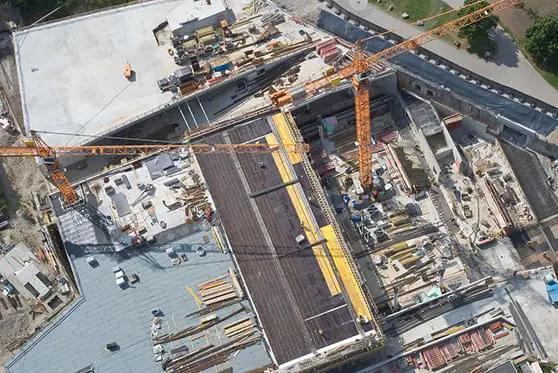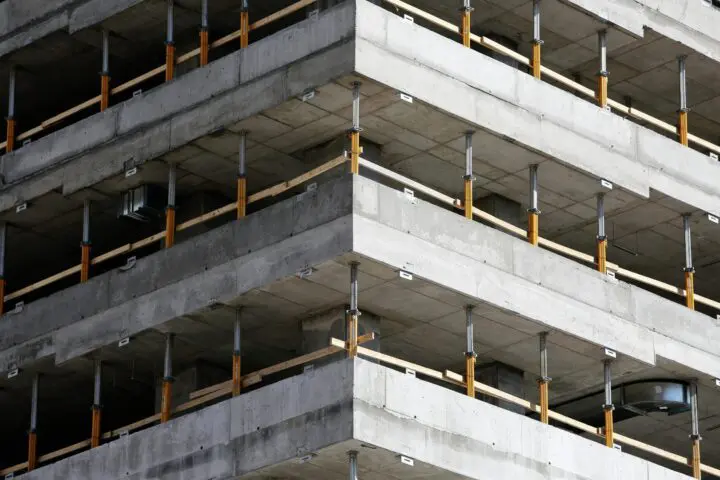Sureties Pursue Design Firms for Recovery of Losses
When a surety has to take over a project from a defaulting contractor, the surety completes the work under the bonded contract and is entitled to the remainder of the contract cost.
Text
When a surety has to take over a project from a defaulting contractor, the surety completes the work under the bonded contract and is entitled to the remainder of the contract cost. Often, the cost of completion exceeds the available payments and the surety looks to sources of cost recovery. In virtually every state, courts recognize that the surety is entitled to all unpaid contract funds after the contractor’s default, but the funds paid before default are what could make the architect the focus of the surety’s cost recovery efforts. In some states, architects enjoy the protection of court decisions that insulate from liability to the surety for various reasons. The number of those states, however, is shrinking and sureties are increasingly pursuing design firms for recovery of losses.
Pursuing recovery based on tort theories
The most common tort claim sureties allege against architects is negligence, or some variation of it. The surety claims that the architect was negligent in:
- Inspecting work-in-place;
- Approving payments from the owner to the contractor;
- Supervising work on the project;
- Confirming delivery and payment for supplies; or
- Responding in an untimely fashion to requests for information concerning the design documents or in authorizing the release of retained funds.
The issue courts face is whether the architect owed a duty to the surety. In considering whether an architect’s conduct has a foreseeable impact on the surety as a third party, the courts often examine the following:
- The extent to which the transaction was intended to affect the third party;
- The foreseeability of harm to the third party;
- Degree of certainty that the third party suffered injury;
- The closeness of the connection between the architect’s conduct and the third party’s injury;
- The moral blame attached to the architect’s conduct; and
- The policy of preventing future harm.

Several courts have found it reasonable for the surety to rely on the protections of the architect’s contract with the owner. The reasoning is that the surety has the right to appreciate that its risk would be less hazardous with assurance of inspection and supervision than where there were no safeguards. Still, other states suggest that the architect’s duty may exist independent of any contractual duty; either from the expectations of the parties or from the standard of care familiar to negligence claims against architects. Unfortunately for the architect, the existence and breach of duty are typically considered to be questions of fact, precluding an early exit from the surety’s litigation.
Claiming the misrepresentation exception to the economic loss doctrine
Without contractual privity, many cases have held that the economic loss doctrine prohibited a surety’s recovery from an architect. An exception to the economic loss doctrine has been encouraged for negligent misrepresentations. A party who provides information to others can be liable for financial loss caused if the other party justifiably relies on information that the provider failed to exercise reasonable care or competence in obtaining or communicating.
Several states adopted this approach depending on the scope of the architect’s work. As the architect accepts more responsibility, its work may be considered more administrative than construction-related, and its role as an information conduit may not be considered ancillary to the construction work.
Many of the circumstances in which sureties sue architects arise from an express or implied contractual undertaking by the architect. Courts consistently display a willingness to look at each project’s circumstances to determine the architect’s role. Unfortunately, there is little uniformity among courts, leading many decisions to appear to be result-oriented.
With the importance of contractual privity and the application of the economic loss doctrine waning, sureties have made significant inroads in developing claims and theories of liability against architects. Though the theories that courts have adopted to permit claims vary, the result is that sureties now have more pockets to look to for reimbursement of surety losses. Without bright lines setting the boundaries of the duties third parties owe to sureties, architects are often left wondering whether their jurisdiction will honor the parties’ contract or find a way to get to a result that the court deems fair.
Arguments for architect liability to the surety
Surety actions against architects share these common arguments:
Improper certification of progress payments—The approval of draw requests that result in overpayments to the contractor may result in loss to the surety if the surety has to step in and is deprived of funds that could be used to complete the project.
Contractor “front-loads” pay requests—To cut down on the expense of borrowing funds for a project, some contractors may submit pay requests beyond what the work-in-place would allow. Front-loading a contract prevents the surety from obtaining the fair value for its continuation of the contract.
Contractor shorting subcontractors and suppliers—That a surety may have to make bond payments where an architect fails in its duty to discover that a contractor is not paying its subs is foreseeable to some courts.
Premature release of retainage—The surety may successfully sue the architect to recover the improperly authorized release of retained funds when it is discovered that the architect failed to adequately investigate whether the contractor had paid for all labor and supplies.
Errors in contract supervision or inspection—Some courts recognize the surety’s right to sue an architect where it is alleged that the architect failed to adequately inspect the work, make an adequate number of inspections, and improperly authorized payment for defective work.
Failure to report construction defects and require corrections to defective work—Some courts hold that the architect is bound to report defective work and see that it is corrected even when there is no contractual obligation.
Deficient design documents—If a contractor defaults and the surety’s cost to complete the project increases because of deficient design, the surety may assert a claim. The foreseeability of harm to the surety is less certain because the surety is not the intended end-user of the design or the finished project.
Victor and CNA work with the AIA Trust to offer AIA members quality risk management coverage through the AIA Trust Professional Liability, Business Owners, and Cyber Liability Insurance Programs to address the challenges that architects face today and in the future.
More on Professional Liability

2024 Professional Liability Trends Every Architect Should Know
News ▪ April 2025
Ethical challenges of generative AI in architectural practice
News ▪ February 2025
Pitfalls of the Profession by LegaLine
Components ▪ Contracts ▪ Legal ▪ Professional Liability ▪ Professional Practice ▪ Risk ▪ Small Firms ▪ Webinar